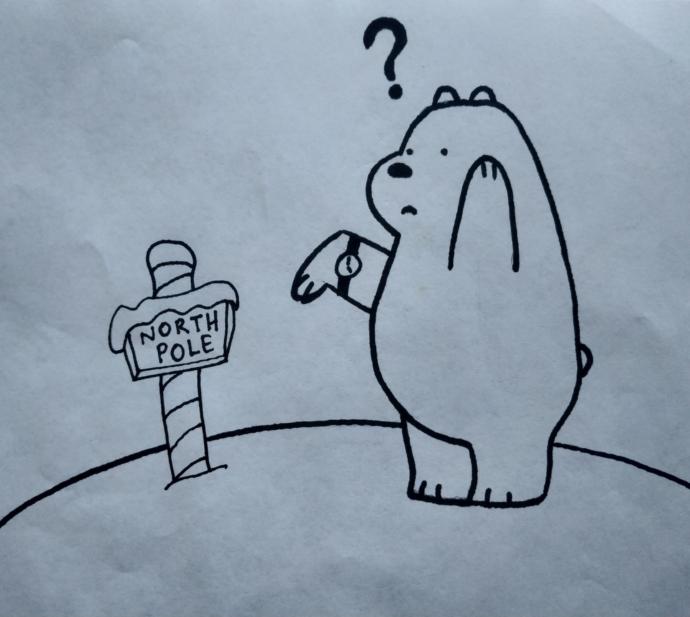
There're two answers to this question. The first is that we must distinguish between legal time and physiological time determined by circadian rhythms. These two times are very close before the polar traveler leaves his home. After a few weeks at the Pole, physiological time is set to a rhythm of around 25 hours, which no longer coincides exactly with local time.
Supposing we're in the winter period, where the sun is under the horizon all the time. Let's place a horizontal table at the pole and draw a circle with two perpendicular diameters. Let A, B, C and D be the ends of these diameters. At the North Pole, we see the stars spinning on planes parallel to the horizon. The plane of the horizon corresponds to the celestial equator.
Let us choose a star on the horizon and defining time 0 at the moment when this star passes at point A (when we look from the center of the circle, that's to say from the pole). The star will pass respectively in B, C and D at 6, 12 and 18 hours. It's then easy to draw other lines on our table representing each hour.
If we were to do this right now (at the North Pole), we could choose the less bright of the three stars of the Orion belt: itcs practically on the celestial equator, and it's clearly visible to the naked eye. The next problem would be how to determine the time in summer, when no stars are visible because the day is perpetual.
Having drawn your lines in winter, you must wait for the appearance of the sun on the horizon, at the beginning of the arctic spring. Note its direction on the table: it represents the start of your 24-hour cycle. But the sun rotates, like the stars in winter, in a plane parallel to the horizon, which will be higher day by day, until it reaches 23.5° above the horizon. It will then descend until it disappears again below the horizon, six months later.
Furthermore, from a geophysical point of view, the time depends on the position of the sun relative to the Earth, and on the position of the observer. All directions from the North Pole being oriented to the south, the sun is always to the south, at North Pole it's always the same time. What time is this? The changing-date line goes to the North Pole, which puts this point, forever, between one day and the next. In other words, it's always midnight at the North Pole: this would explains how Santa Claus manages to deliver his gifts to all corners of the planet in one night. He leaves his cave in a southerly direction, delivers his sled's load, then returns home, where it's exactly the same time as when he left. And he starts again.
Most Helpful Opinions